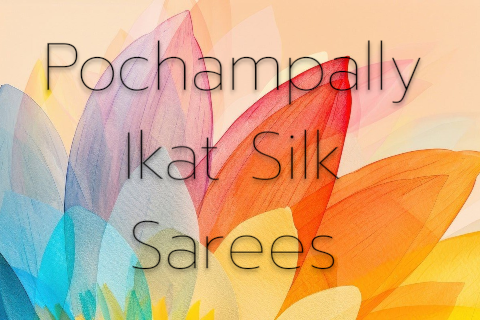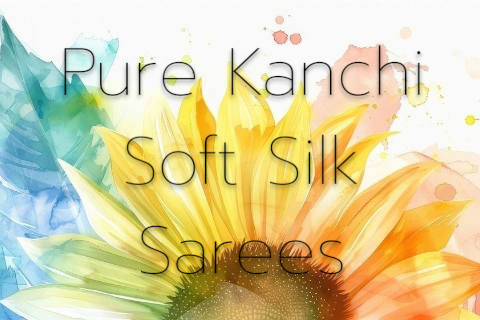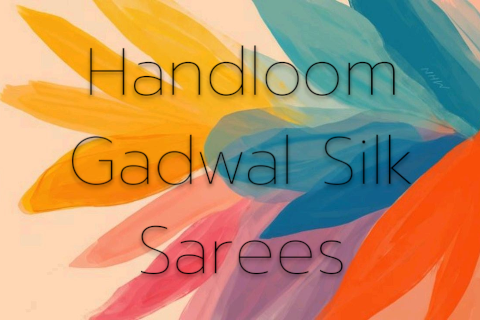 Introduction
Introduction
India’s textile legacy is woven into centuries of tradition. From Pochampally Ikat to Gadwal, Kanchipuram silk, and Venkatagiri sarees, these regional fabrics bear Geographical Indication (GI) tags meant to protect authenticity. Yet, a disheartening reality unfolds: millions of skilled weavers struggle to survive amid mass-produced imitations and insufficient support.
The Legacy of GI‑Tagged Indian Sarees
Geographical Indication (GI) tags were granted to preserve heritage styles:
-
Pochampally Ikat received GI Tag in 2004.
-
Kanchipuram silk sarees got their GI Tag in 2005.
-
Gadwal silk sarees were protected in 2010.
-
Venkatagiri sarees achieved GI status in 2011.
In theory, GI tags protect regional varieties and ensure authenticity—but in practice, the protection often remains only on paper.
Pochampally Ikat – GI Tag 2004
Pochampally, Telangana, is famed for its Ikat weaving. The GI tag granted in 2004 affirms its identity. However, there are an estimated 40,000 weaving families still dependent on handlooms. But despite the recognition, many struggle financially. Low wages and limited market access leave artisans vulnerable.
Explore authentic Pochampally sarees via this trusted resource: Pochampally Sarees and discover their curated collections such as Ikat Designer Silk Sarees.
Gadwal Silk Sarees – GI Tag 2010
Gadwal sarees are known for their exquisite zari borders and silk-weft structure. Their GI status since 2010 underscored their uniqueness. But only 800 to 1,200 registered GI-designated handlooms exist in Gadwal—a fraction of local weavers. Producing only 4 to 5 sarees per month per weaver, and with only around 20% of output being authentic handloom, the rest (80%) often consists of cheaper power-loom or machine-made imitations marketed as “Gadwal silk”.
See collections at: Pure Gadwal Silk Sarees.
Kanchipuram Silk Sarees – GI Tag 2005
Kanchipuram, Tamil Nadu, is a global name in bridal silk. GI protection came in 2005. With more than 45,000 expert weavers, it's a large-scale tradition. However, surging imitation production in other regions has caused serious income drops for traditional weavers.
Support the heritage through selections here: Kanchipuram Silk Sarees.
Venkatagiri Sarees – GI Tag 2011
Venkatagiri’s fine cotton-silk sarees, often with single repeat motifs and zari checks, were GI-tagged in 2011. Though celebrated stylistically, weavers face market invisibility, low margins, and competition from machine alternatives.
See offerings here: Venkatagiri Silk Sarees.
On‑Paper Protection Vs Ground Realities
While GI tags grant legal identity, enforcement is weak:
-
In many cases, about 80% of marketed “Gadwal sarees” are fake, diluting trust.
-
Kanchipuram faces mass-produced counterfeits often sold at half the price.
-
Pochampally weavers struggle with small orders and delayed payments.
Even with GI registration, most producers don’t get premium value.
Weaver Families Struggling in Pochampally
With around 40,000 families involved in handloom Pochampally weaving, livelihoods are at stake. Yet monthly saree output is low—4 to 5 each—and margins slim. As middlemen dominate transactions, weavers get only ₹200–₹300 per saree after months of labor.
Gadwal Weavers: Registered Numbers & Output
Only 800–1,200 GI-registered looms in Gadwal produce a small fraction of authentic sarees. Each registered weaver makes about 4–5 sarees monthly, and only 20% qualify as true handloom. The other 80% are lower-cost imitations, often passed off as authentic—it saps market trust.
Kanchipuram’s Expert Weavers
With 45,000+ skilled artisans, Kanchipuram offers unmatched heritage sarees. But they face price erosion as power-loom products flood the market. Genuine weavers often cannot compete in price—so they work for meager wages or give up traditional methods.
The Fake Saree Phenomenon
Mass-produced faux sarees mimic GI-tagged designs. They're sold cheaply, often with misleading labels. These fakes:
-
Undermine weaver incomes
-
Confuse consumers
-
Weak-link GI credibility
When 80% of so-called “Gadwal sarees” are fake, the authenticity standard collapses.
Economic Hardship of Handloom Weavers
Weavers average just 4–5 sarees per month per person. With low real pay and family labor, annual income may barely reach ₹50,000–₹75,000. There’s no social security, and many incurred debt.
Challenges Across the Spectrum
-
Lack of market linkages — limited online presence
-
Technology gap — reliance on old looms
-
Middlemen exploitation — take majority of profit
-
Counterfeit competition — fake sarees erode value
-
Low price realization — buyers unwilling to pay true handloom premium
Case Studies & Voices from the Ground
Weavers share harrowing experiences: delayed wages, broken looms, soaring raw material costs. Many artisans confess that while GI tags sound helpful, they rarely result in better pay.
Role of Government and Policy
Institutions like the Handloom Development Corporation and the Ministry of Textiles offer schemes. However, the impact is limited due to poor enforcement, weak marketing, and regional inequity.
How Consumers Can Help
Supporting authentic producers matters:
-
Buy from verified GI-certified sellers like those shown on Pochampally Sarees
-
Ask for GI tag certification
-
Support direct-to-weaver platforms like cooperatives and ethical boutiques
-
Spread awareness about the difference between genuine handloom and power-loom
Future Outlook
Sustainable change can happen via:
-
Digital platforms connecting weavers directly to global consumers
-
Certification enforcement and crackdown on counterfeit goods
-
Training weavers for evolving designs
-
Micro-finance and social security
Frequently Asked Questions (FAQs)
1. What does a GI tag guarantee for sarees?
It legally ties a product to a region—but doesn’t guarantee quality enforcement or fair income distribution.
2. Why are so many Gadwal sarees fake?
Because only a small number of looms produce authentic pieces, while mass-manufactured versions flood the market.
3. How many sarees does a traditional weaver produce monthly?
Around 4 to 5, regardless of region.
4. What percentage of marketed sarees are authentic?
Estimates suggest just 20% genuine handloom; the rest may be fakes.
5. Do GI tags increase income for weavers?
In theory yes—but in practice, due to poor enforcement and fraud, benefits are minimal.
6. Where can I buy authentic sarees directly supporting weavers?
Platforms like the linked Pochampally Sarees site are good options to find verified artisan products.
Conclusion
India’s handloom heritage remains vibrant on paper but tenuous in reality. GI tags like those from Pochampally (2004), Gadwal (2010), Kanchipuram (2005), and Venkatagiri (2011) are important—but without proper enforcement, weavers pay the price. True support means buying ethically, demanding transparency, and backing direct trade. Only then can the rich tradition survive and prosper.








